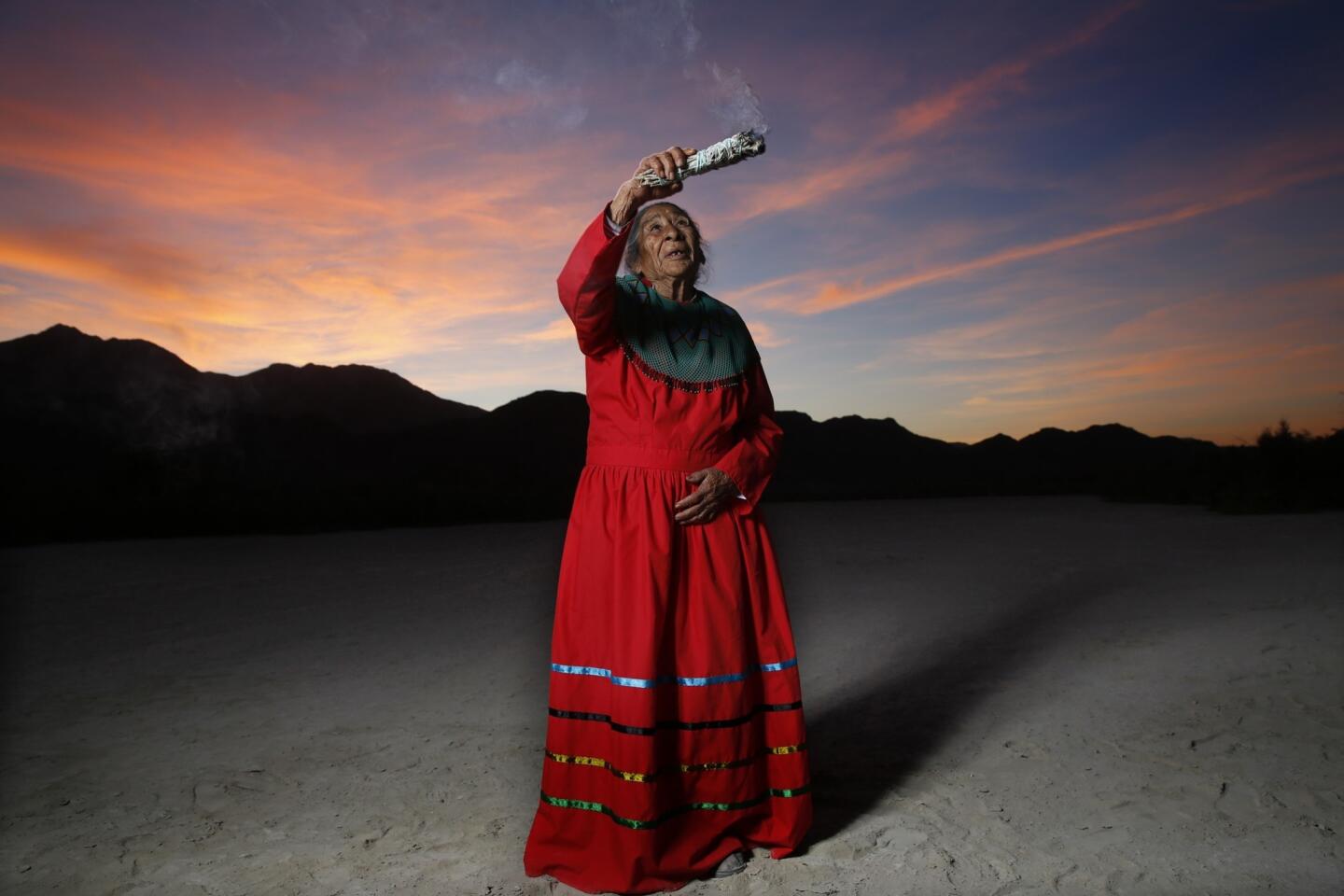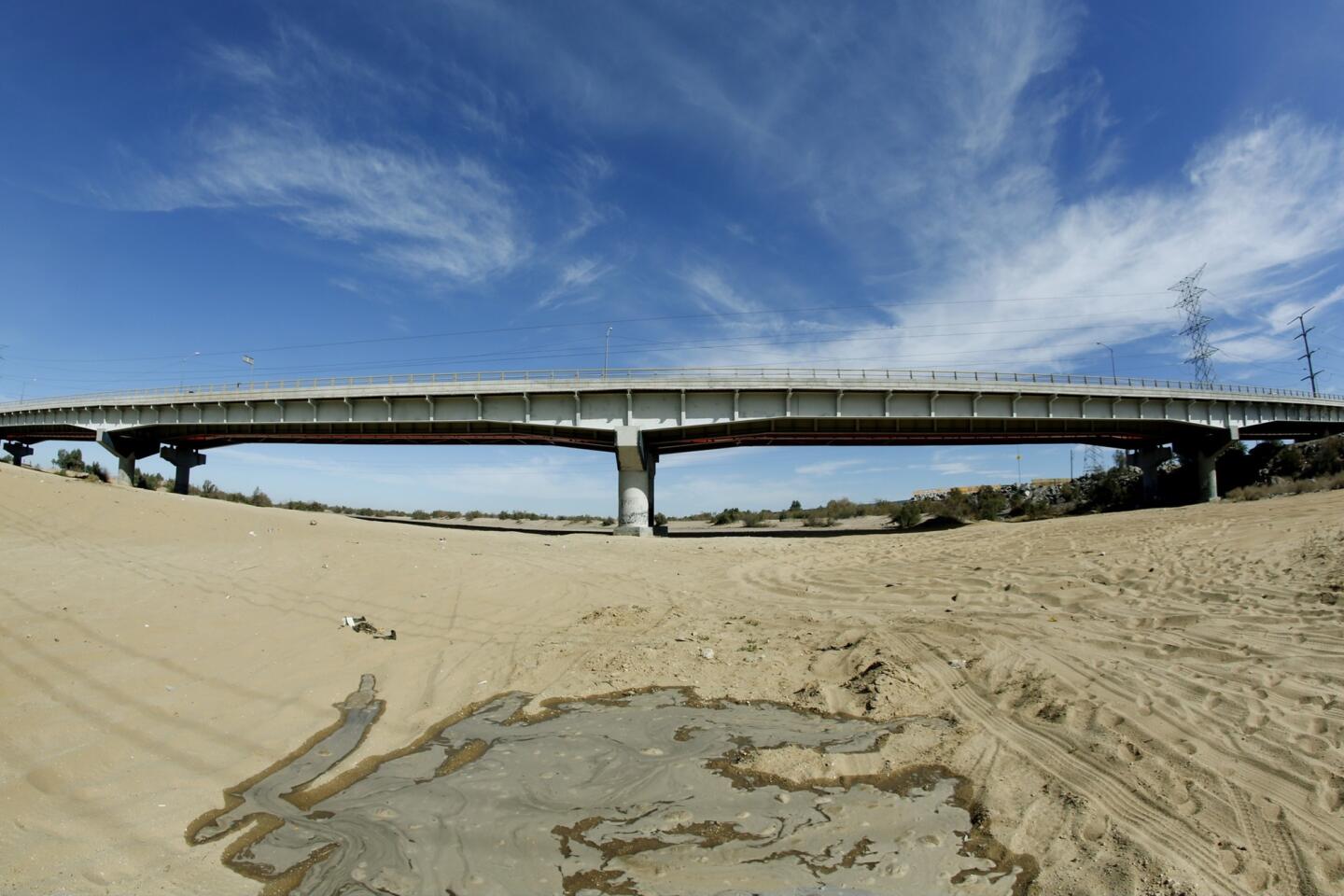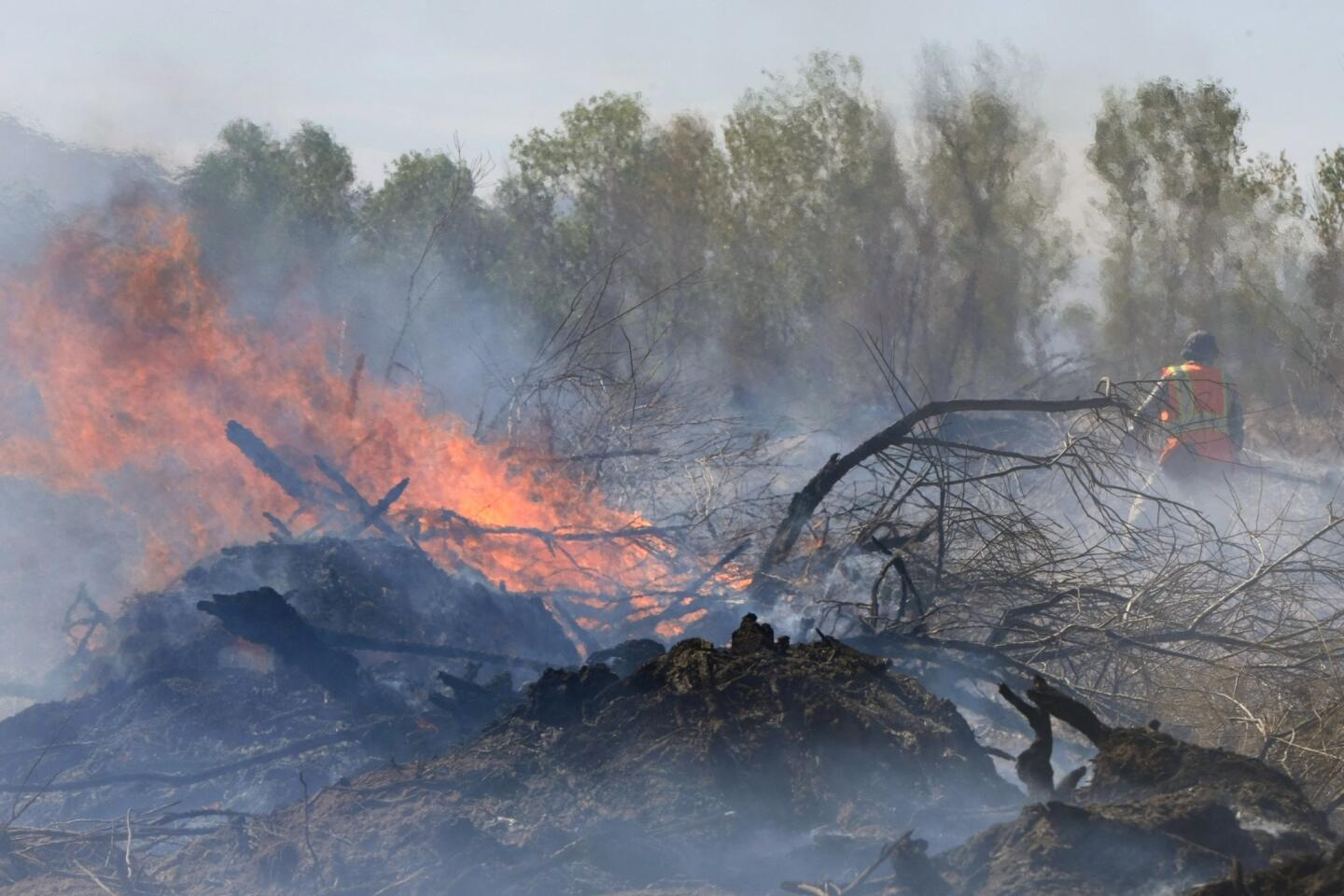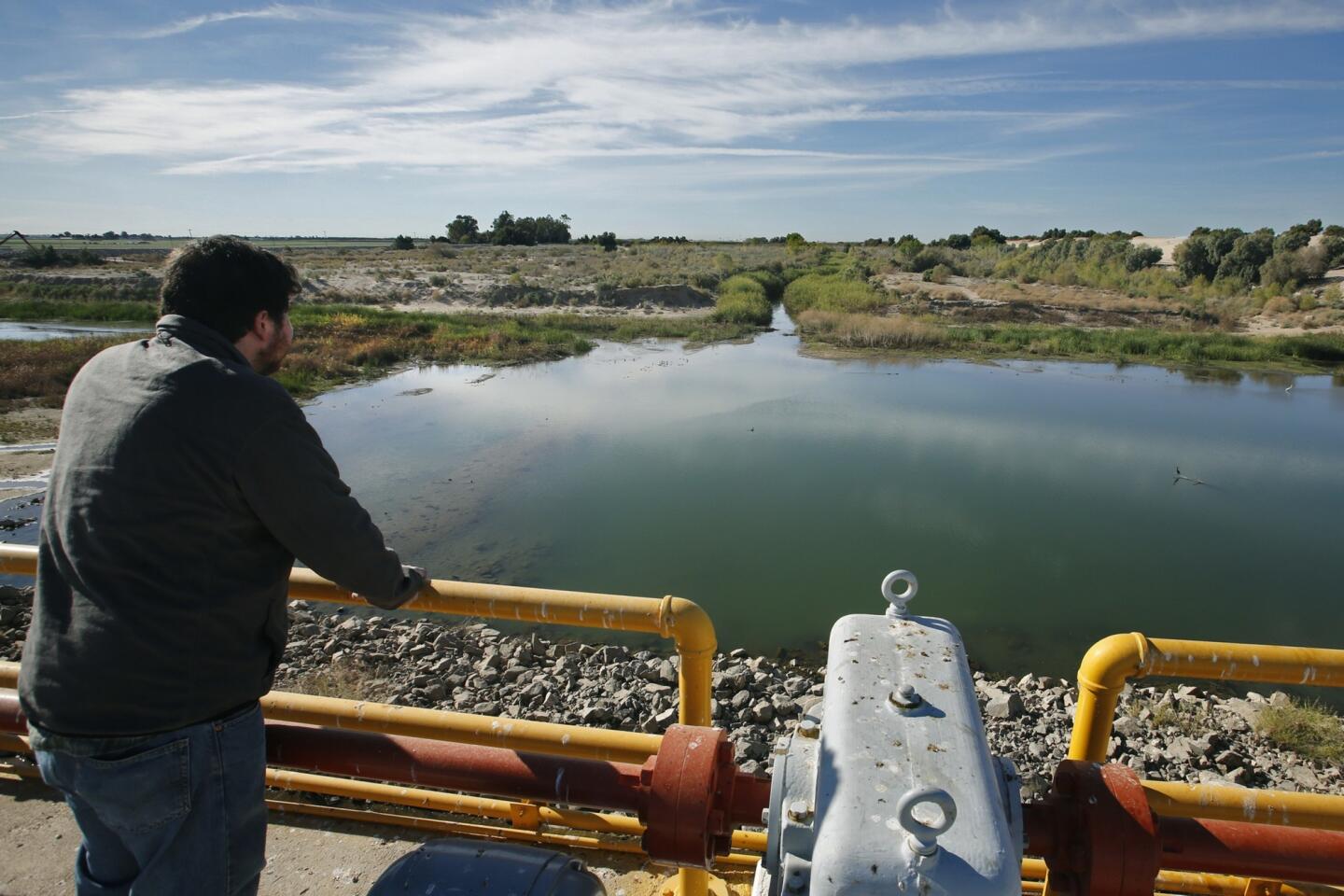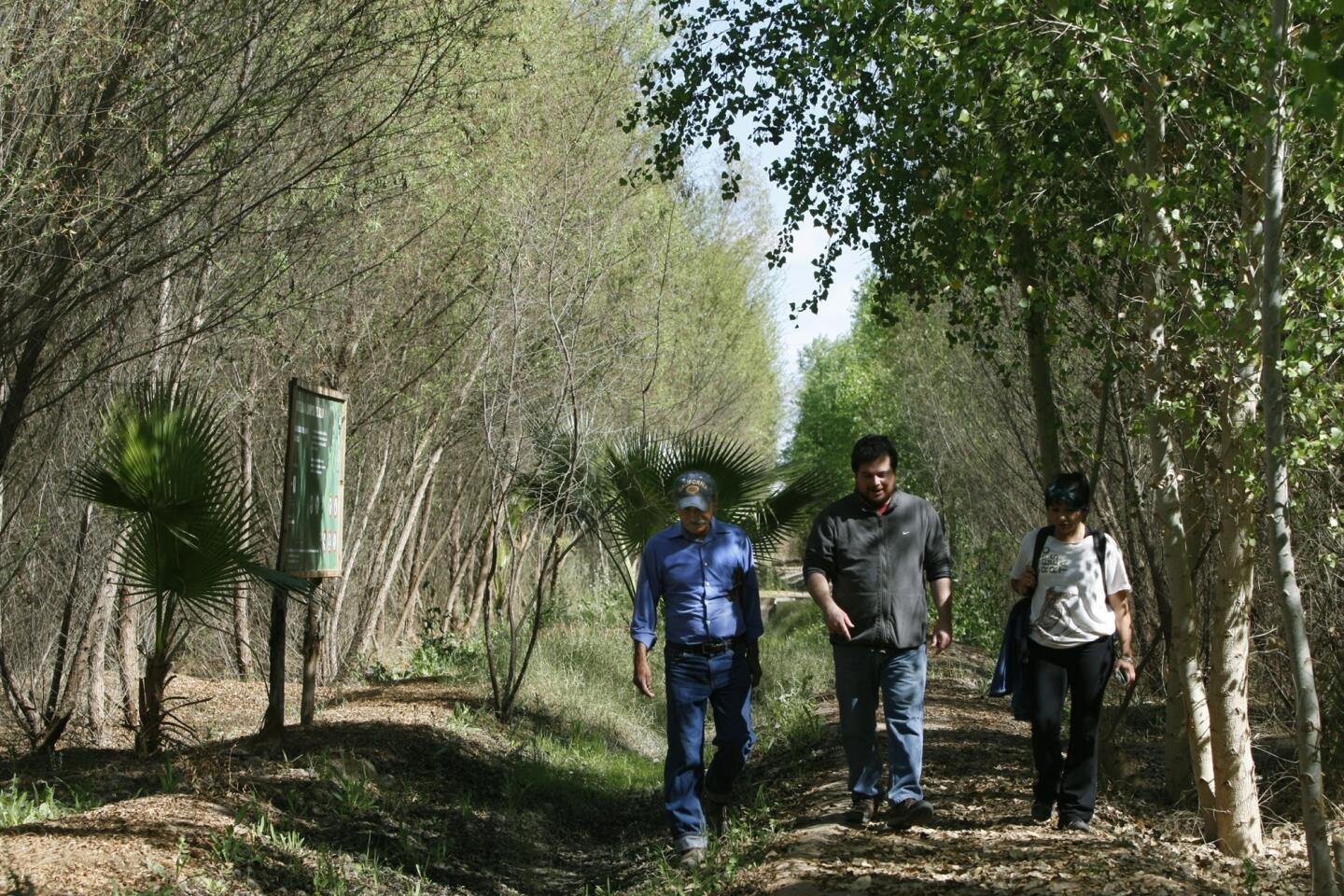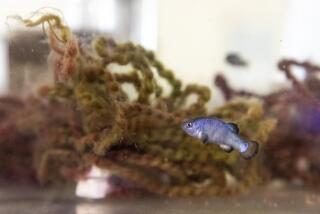U.S.-Mexico experiment aims to resurrect the Colorado River delta
LOS ALGODONES, Mexico — The mighty Colorado River, which over millenniums has carved the Grand Canyon, does an unusual thing when it gets south of the Arizona-Mexico border. It dies.
The Morelos Dam — sitting on the international boundary — serves as its headstone, diverting nearly all of the river water into an aqueduct that serves agriculture as well as homes in Tijuana.
South of the dam, the river channel travels about 75 miles to the Gulf of California. Except when filled by rains, the channel is bone dry. But starting Sunday, the river will flow again, part of an unprecedented experiment by U.S. and Mexican officials.
PHOTOS: Restoring the Colorado River delta
A few days ago, the International Boundary Water Commission, made up of Mexican and U.S. officials, released water from Lake Mead in Nevada to send it toward the Colorado River delta, a region cut off from most of the river’s flow by the dams and diversions constructed in the 20th century.
Although there have been experimental high-flow water releases in the Colorado River, such as one last year from Lake Powell designed to spread sediment in the Grand Canyon, this is the first “pulse” for the delta.
The pulse, in the planning stage for some time, is part of a five-year pilot project designed to reinvigorate the delta environment. It’s a coincidence that it comes when a record drought has increased concerns about the future of water security in the West.
That’s why Mexican and U.S. water authorities, hoping to stem any pushback or last-minute hesitation, met with California and Arizona officials before announcing the pulse to assure them that they would receive their full allotment of Colorado River water this year.
The pulse will start slowly Sunday, when officials lift the gates at the Morelos Dam, west of Yuma, Ariz., releasing about 700 cubic feet of water per second. It will peak Thursday when about 4,200 cubic feet per second will rush through the dam. Over eight weeks, an estimated 105,000 acre-feet will be released. (An acre-foot is the amount water required to cover an acre a foot deep, or about 326,000 gallons — enough to supply two average homes for one year.)
Experts from both countries will study the effects of the release. It’s unlikely the water will reach the Gulf of California and unclear whether it will all soak into the soil or be left standing in parts of the channel.
The pulse is allowed under an amendment approved two years ago to a 1944 treaty governing water use by the two countries. The amendment established new rules for sharing water in times of drought and committed both nations, often at odds over water, to conducting the pulse experiment.
The release is intended to revitalize the delta, help Mexican farmers grow their crops, recharge the aquifer and bring back hundreds of bird species native to the region.
Juan Butron Mendez, a 63-year-old farmer who also gives guided tours for Pronatura Noroeste, a Mexican conservation group, said he vividly remembers the rapid current of the river when he was 4 years old in the Mexicali Valley, about 30 miles south of the border.
“The water surged so strong there were large whirlpools swirling with oranges, grapefruits and trees,” Butron recalled.
He and his family left the area for a few years before returning in the late 1960s. The river wasn’t the same, he said.
“It only had a tiny bit of water, maybe 2 inches deep,” he said. “Then it just became a desert.”
Osvel Hinojosa, water and wetlands program director at Pronatura Noroeste, described the region as resilient.
“Just a little bit of water makes a big difference here,” Hinojosa said of the experiment to determine whether a healthy delta system can be maintained without a lot of water. He also acknowledged the limits of the restoration project.
“We cannot restore the delta to what it was 100 years ago,” Hinojosa said. “What was then wetlands is now farmland, and we need to respect that.”
The pulse is supposed to mimic a flood produced by a spring snowmelt. However, this week’s flood will provide only a smidgen of what would have flowed before the dams were built, officials said.
It is the only release planned so far. At the end of the 5-year pilot project, U.S. and Mexican officials will review findings and discuss whether other discharges should be made.
On a recent day, backhoes roared as they cleared out salt cedar, an invasive species, from the dry riverbed about 20 miles south of the border. A group of Pronatura workers and volunteers have already prepared areas near the banks for restoration, planting willows and cottonwood, which are native and ideal habitat for various bird species.
The water should provide the “right jolt of caffeine” for the area, Hinojosa said.
But not everyone will benefit from the pulse.
Farther south on Highway 2, past lettuce and alfalfa fields, the Cucapa people probably won’t be reached by the infusion of water, officials said. About 200 Cucapa, an indigenous people, live in El Mayor, about 45 miles south of the border.
Their name means “people of the river,” and Inocencia Gonzalez Saiz, a 77-year-old Cucapa elder, remembers when the Colorado River ran free.
“It was very deep. Not like it is now,” said Gonzalez, who is referred to affectionately as Doña Inocencia. “Now, not even the fish are good anymore.”
Gonzalez looked down at a part of the riverbed covered in salt cedar. The channel is normally parched, but rains a few days earlier had filled it a little less than halfway across.
She remembers it wider and deeper — enough for boats.
PHOTOS: Restoring the Colorado River delta
“The steamboat would come up from La Paz to that dock right there,” Gonzalez said.
The children would get excited because the boat often hauled candy.
“When I’m alone in my house,” she said, “sometimes I just daydream about those days.”
More to Read
Start your day right
Sign up for Essential California for news, features and recommendations from the L.A. Times and beyond in your inbox six days a week.
You may occasionally receive promotional content from the Los Angeles Times.
